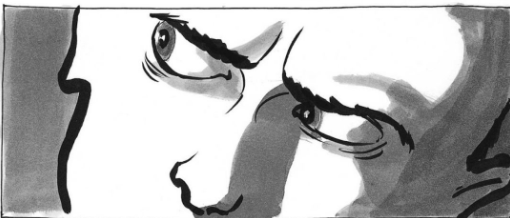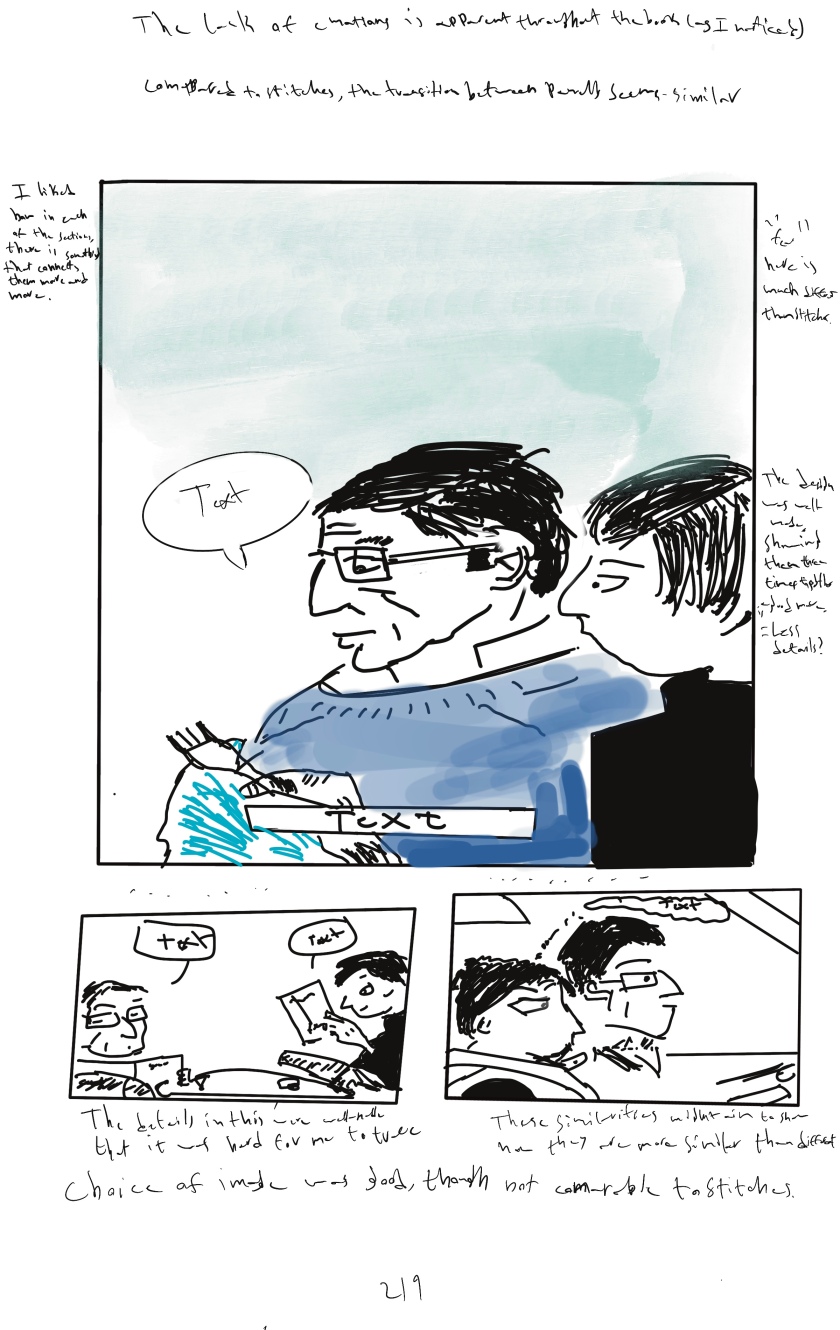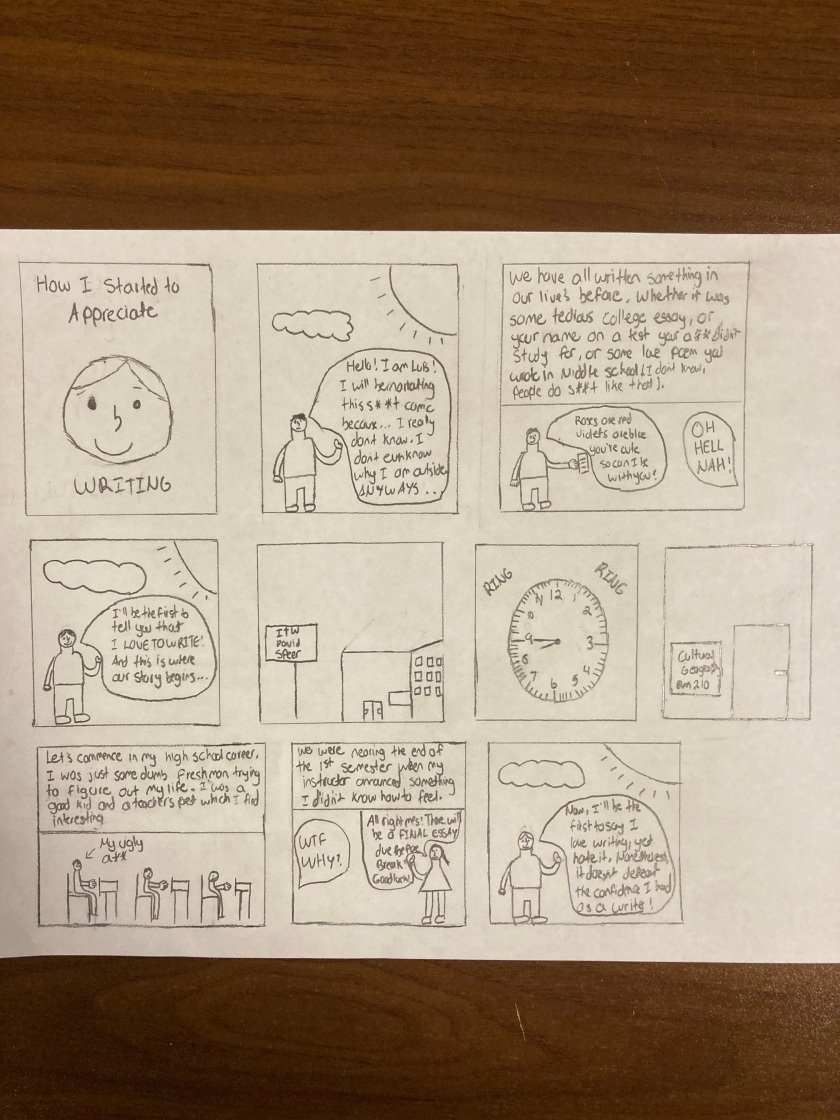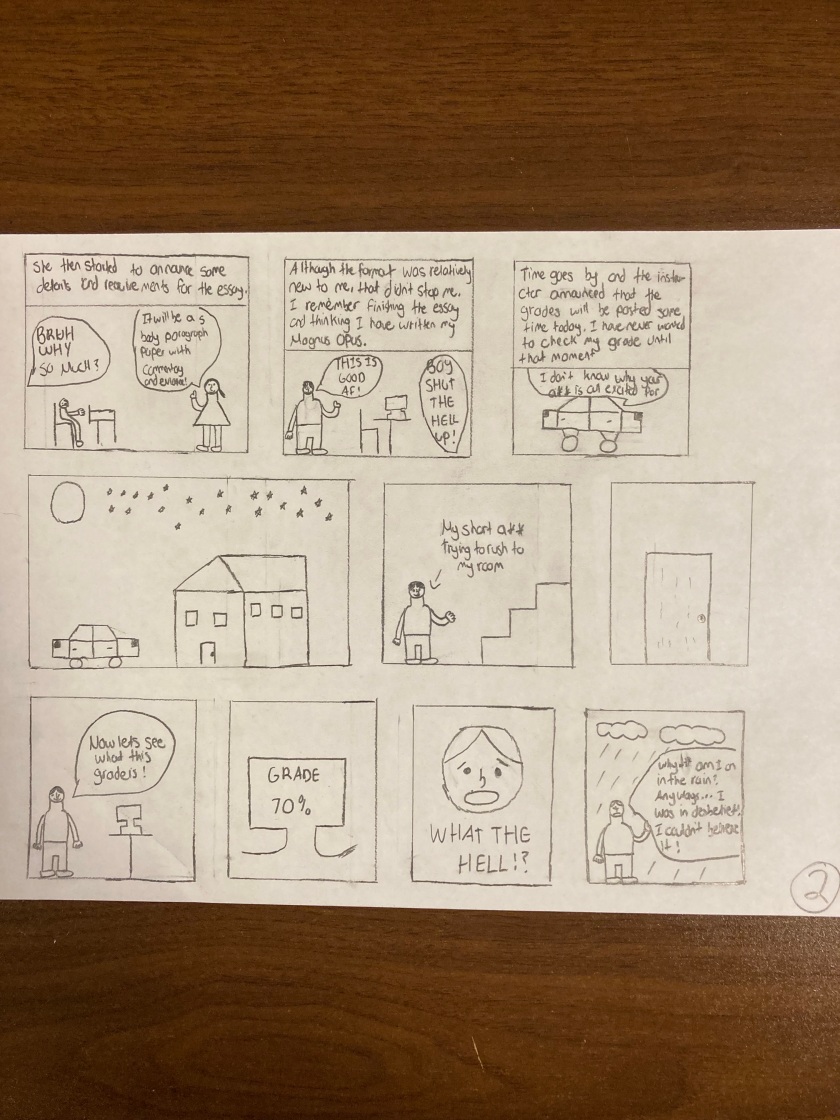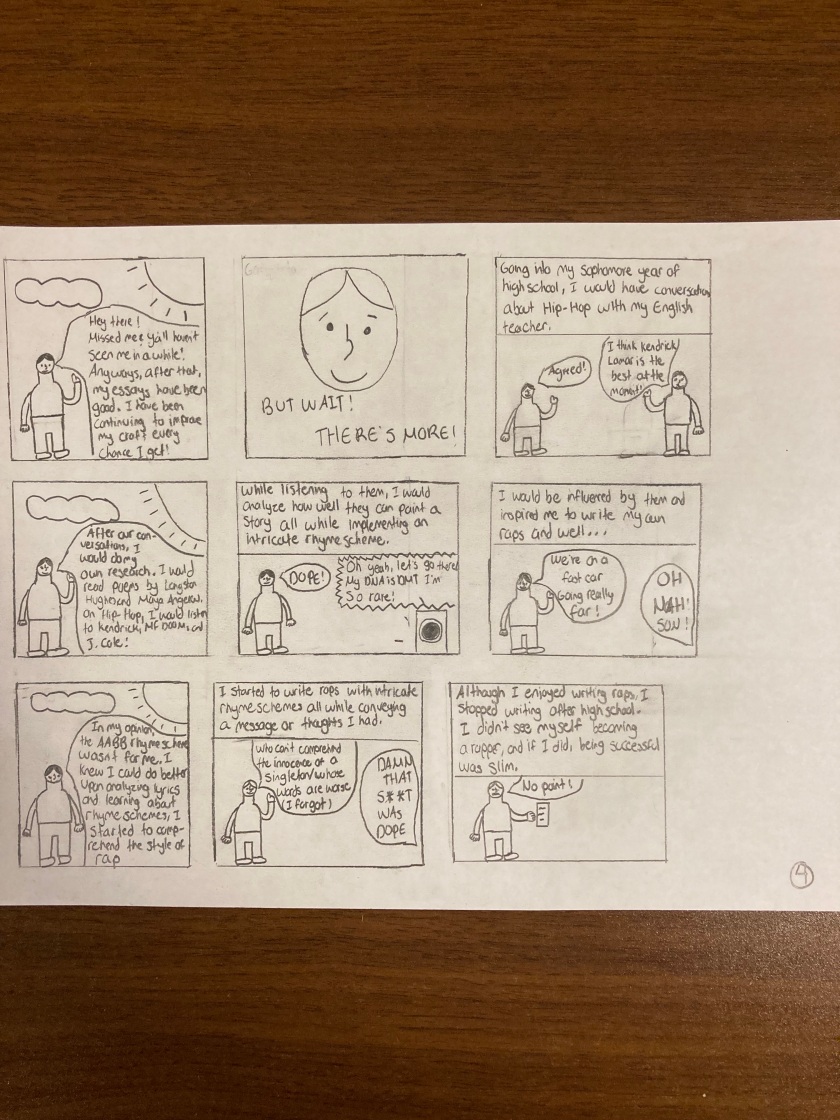Reflection-comics
Overall, I enjoyed completing this assignment and was able to practice and reflect on what we’ve discussed over the class through the process. The first step, which was drawing the storyboard, was the most challenging yet most interesting part for me. The process of turning an essay into comics made me think about ways to change it into a more concise narrative since the ultimate goal was to effectively recount the story in the least number of pages possible. Therefore, I re-arranged some parts of the story in order to have more pages for the ending part where I could slow down, leaving the readers something to think about. It was through completing this assignment that I began to realize that the smoother the comic reads, the more time and energy the author has used to conceive the storyboard, but readers could easily underestimate the difficulty of creating a seamless narrative. In addition, compared to the essay, I tried to add some humor and interesting details in my comics as I realized that the readers could easily lose interest in pure accounts of personal experience.
As for drawing, I used procreate since it allowed me to easily make changes and add text and color. Initially, I was planning to draw a black and white comics, but later found that color would be particularly helpful to signal transitions and create a certain ambiance. For instance, in my comics, the first and last few pages were colored in pale blue while the others were in brown, thus encouraging the readers to notice the relationship between different parts and pay attention to how they are indicative of the protagonists’ personal growth.
One thing that I wish to improve on is the layout of the page. While uploading the pages onto my website, I noticed that the layout for the first few pages is really compact, while other pages are more spaced, which might disrupt the reading. Also, I wish to come up with ways to include fewer texts by coming up with more informative visuals in my future projects.

